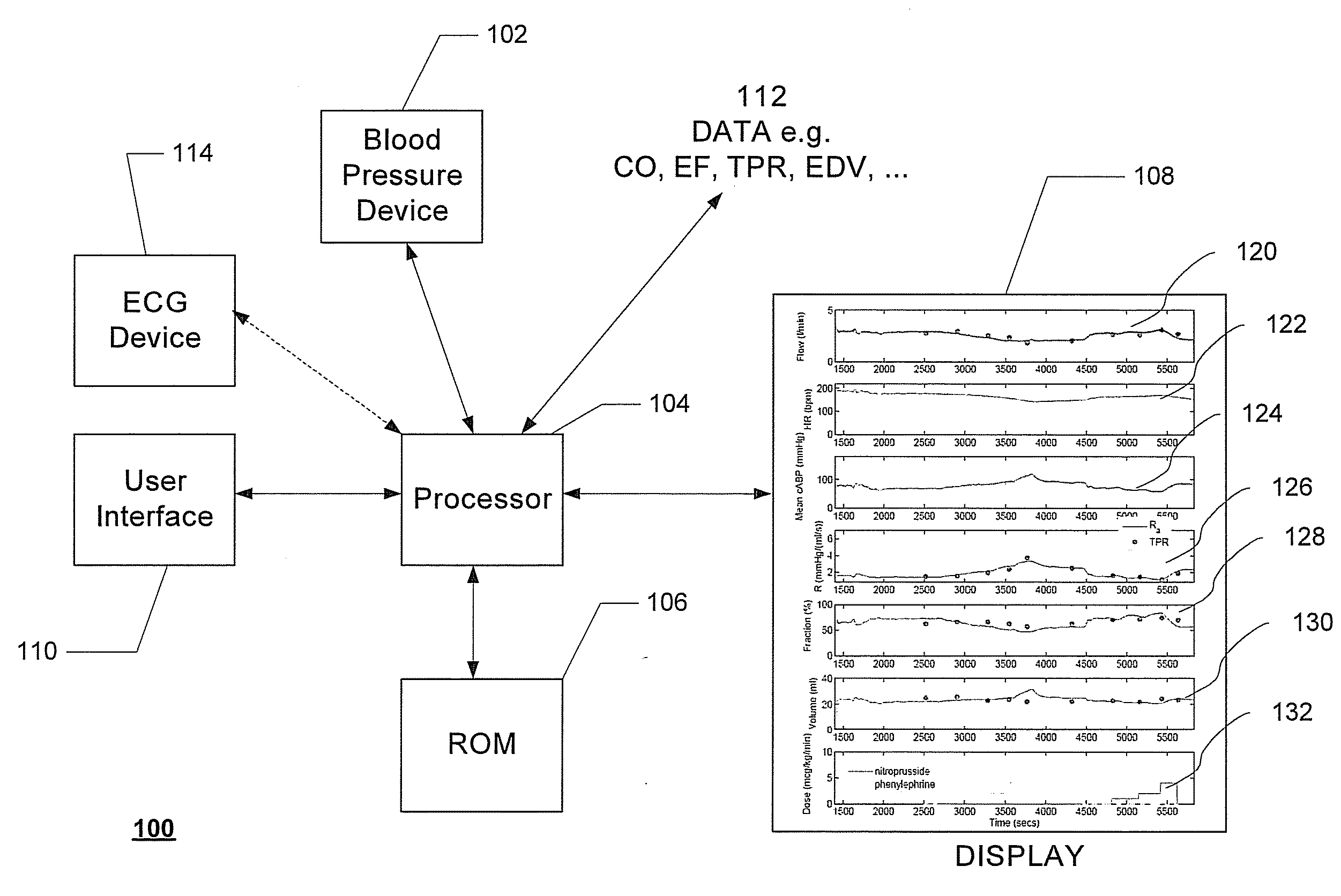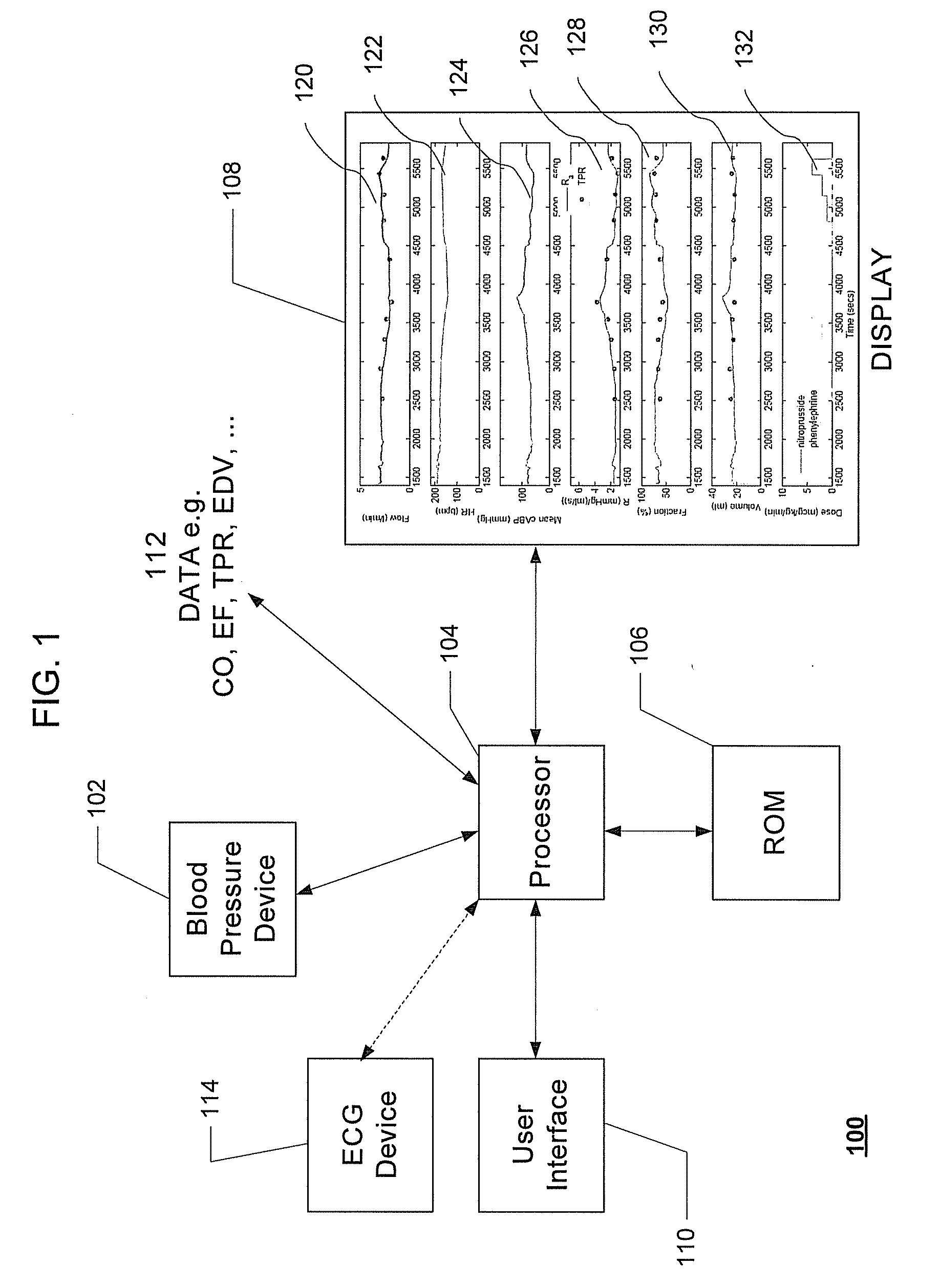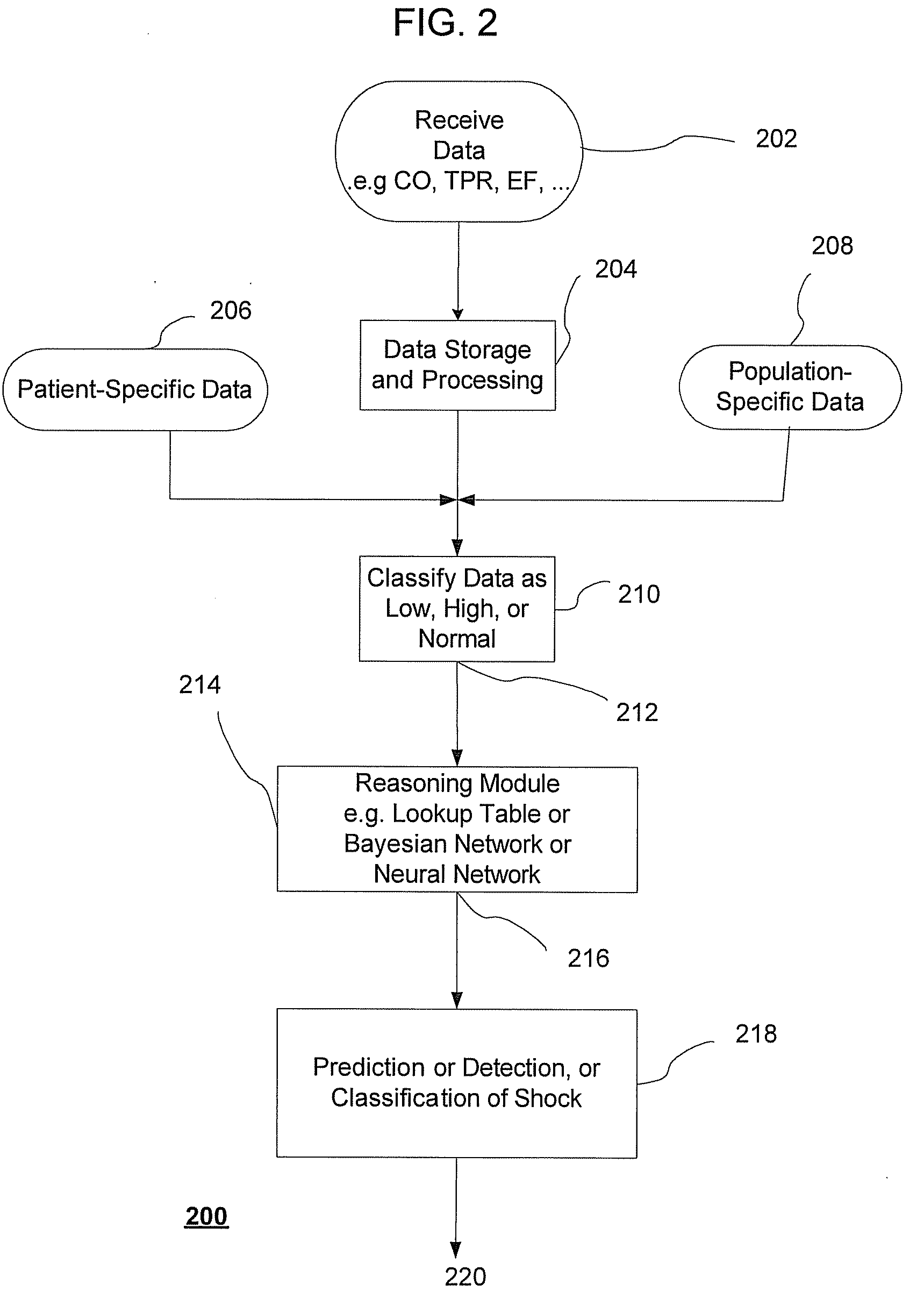System and method for prediction and detection of circulatory shock
a technology of system and method, applied in the field of systems and methods for predicting and detecting circulatory shock, can solve the problems of sheer volume of information, complicated task of clinicians in integrating and interpreting data, and even more difficult task
- Summary
- Abstract
- Description
- Claims
- Application Information
AI Technical Summary
Benefits of technology
Problems solved by technology
Method used
Image
Examples
Embodiment Construction
[0036]To provide an overall understanding of the invention, certain illustrative embodiments will now be described. However, it will be understood by one of ordinary skill in the art that the methods described herein may be adapted and modified as is appropriate for the application being addressed and that the systems and methods described herein may be employed in other suitable applications, and that such other additions and modifications will not depart from the scope hereof.
[0037]FIG. 1 is a block diagram of a shock prediction and detection system 100 in which the present invention's teachings may be implemented. Such a system may be deployed in an intensive care unit, or other clinical setting. In such clinical settings, Applicants envision providing beat-to-beat estimates of CO, HR, SV, TPR, EF, Contractility, and EDV to clinicians and nurses, together with a classification of the type of circulatory shock, allowing them to quickly decide on therapeutic interventions for ICU p...
PUM
 Login to View More
Login to View More Abstract
Description
Claims
Application Information
 Login to View More
Login to View More - R&D
- Intellectual Property
- Life Sciences
- Materials
- Tech Scout
- Unparalleled Data Quality
- Higher Quality Content
- 60% Fewer Hallucinations
Browse by: Latest US Patents, China's latest patents, Technical Efficacy Thesaurus, Application Domain, Technology Topic, Popular Technical Reports.
© 2025 PatSnap. All rights reserved.Legal|Privacy policy|Modern Slavery Act Transparency Statement|Sitemap|About US| Contact US: help@patsnap.com



